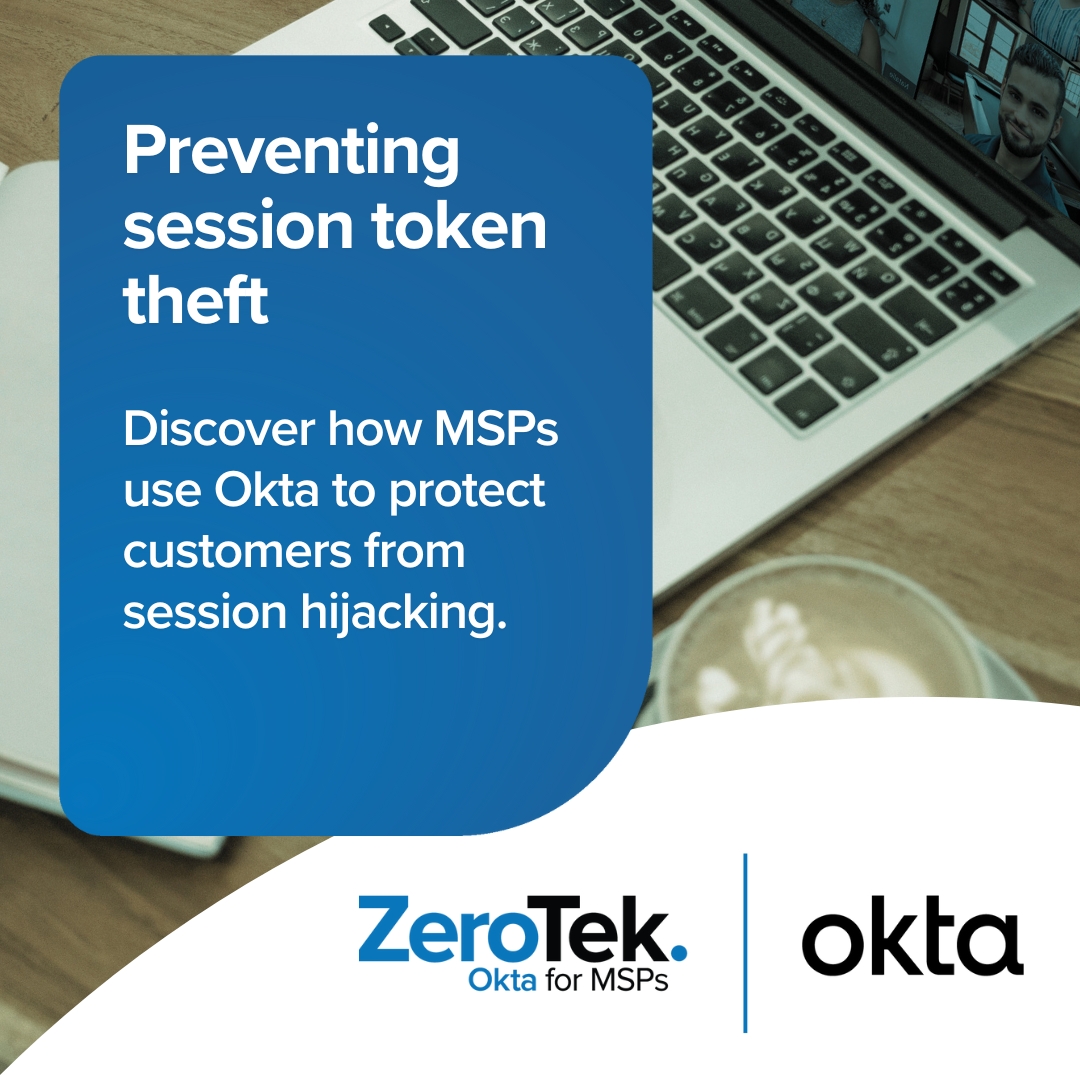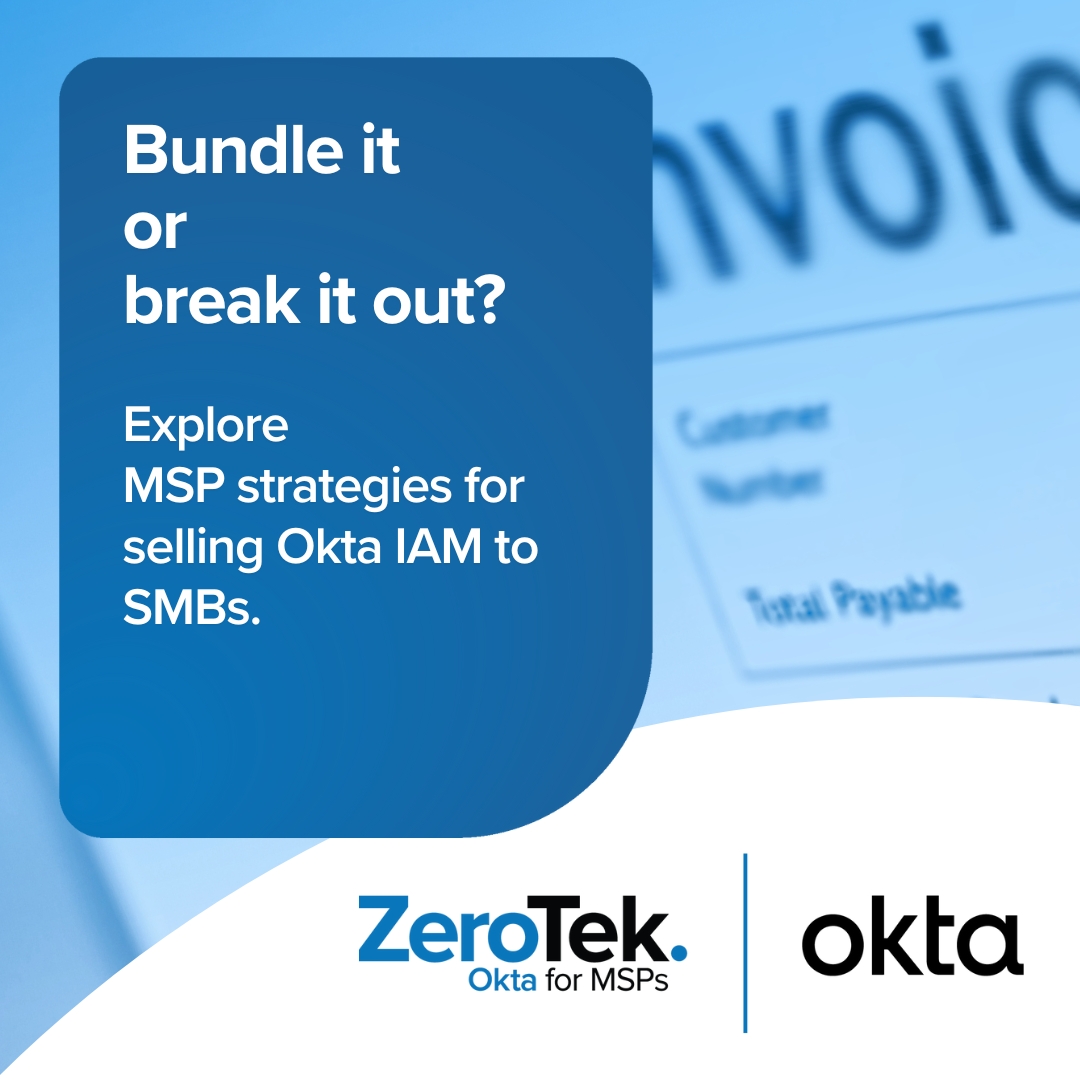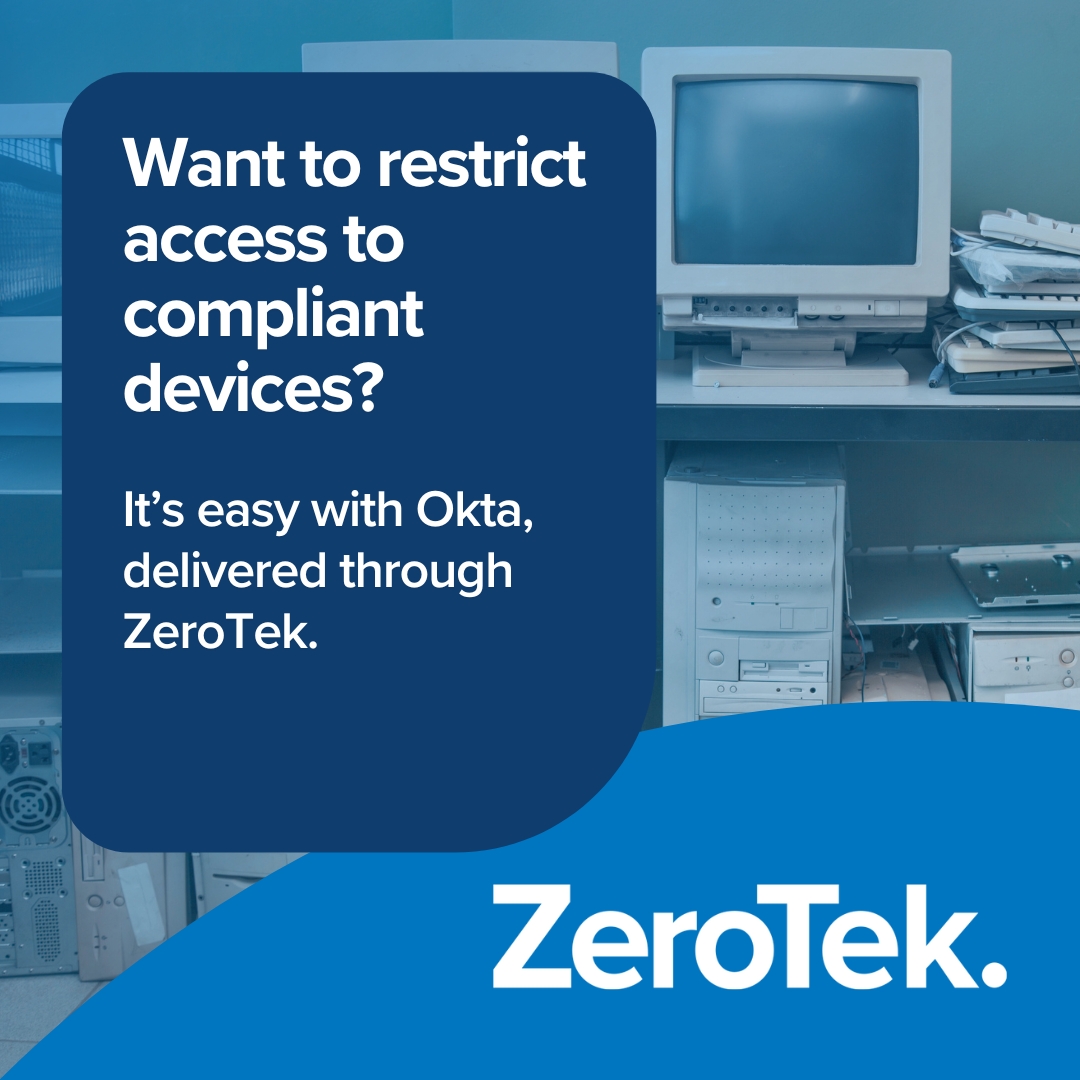Key Takeaways
- Session token theft is a real threat: Attackers can bypass MFA and gain undetected access to client environments.
- Okta session timeouts limit risk exposure: Session lifetime and idle timeout settings help minimize the window for token misuse.
- Universal Logout extends session control: When properly configured, sessions terminate across Okta and supported third-party apps.
- Layered security hardens defenses: Device trust, phishing-resistant MFA, and app-level reauthentication reduce token theft opportunities.
- ZeroTek simplifies Okta deployments for MSPs: Field-tested configurations, expert guidance, and multitenant tools help you deliver secure, scalable identity solutions.
Sections
- Facing the threat of session hijacking
- What is session token theft?
- Okta session settings are a helpful first step
- MSP best practices for Okta session settings
- Understanding the limits of session settings
- Extending Okta session settings control to third-party apps
- Defense in depth: best practices Okta security strategies for MSPs
- ZeroTek helps MSPs navigate evolving security threats
- Conclusion: Secure your clients against session hijacking
Sections
- Facing the threat of session hijacking
- What is session token theft?
- Okta session settings are a helpful first step
- MSP best practices for Okta session settings
- Understanding the limits of session settings
- Extending Okta session settings control to third-party apps
- Defense in depth: best practices Okta security strategies for MSPs
- ZeroTek helps MSPs navigate evolving security threats
- Conclusion: Secure your clients against session hijacking
Key Takeaways
- Session token theft is a real threat: Attackers can bypass MFA and gain undetected access to client environments.
- Okta session timeouts limit risk exposure: Session lifetime and idle timeout settings help minimize the window for token misuse.
- Universal Logout extends session control: When properly configured, sessions terminate across Okta and supported third-party apps.
- Layered security hardens defenses: Device trust, phishing-resistant MFA, and app-level reauthentication reduce token theft opportunities.
- ZeroTek simplifies Okta deployments for MSPs: Field-tested configurations, expert guidance, and multitenant tools help you deliver secure, scalable identity solutions.
Facing the threat of session hijacking
It’s a nightmare scenario for any Managed Service Provider (MSP): attackers steal a session token and defraud a customer out of hundreds of thousands of dollars, dealing a huge hit to their business—and your reputation. Even with robust identity controls like strong passwords and multifactor authentication (MFA), attackers can bypass defenses if they manage to steal a valid session token. Session hijacking is an active, evolving threat that leaves your SMB clients dangerously exposed if you don’t implement an effective defense grounded in best practices.
To protect session tokens, maintain trust, and safeguard customer environments, ZeroTek recommends a layered approach, informed by our field-tested best practices for MSPs using Okta’s leading identity and access management (IAM) platform to succeed.
In this article, we explain:
- What session token theft is
- How to configure basic Okta settings to establish baseline security
- Advanced strategies for mitigating session hijacking with Okta
- How ZeroTek simplifies secure, scalable Okta deployments for MSPs
What is session token theft?
Session tokens (also called session cookies) are temporary digital credentials that allow users to remain authenticated as they move between apps and services. Once authenticated, users don’t need to log in again until the session expires or they manually log out.
The problem? If an attacker steals a valid session token, they can impersonate the user and access protected systems—completely bypassing login screens and MFA prompts.
Common ways attackers steal session tokens:
- Malware infections: Malware on a device scrapes session tokens from browser memory.
- Phishing attacks: Sophisticated phishing pages capture login credentials, session tokens, or both.
- Man-in-the-middle (MitM) attacks: Attackers intercept session tokens on unencrypted networks.
Once obtained, stolen tokens can be injected into a browser or tool, granting unauthorized access that often goes undetected.
The takeaway: Even the strongest password and MFA policies won’t stop an attacker armed with a valid session token. That’s why a layered strategy is essential.
Okta session settings are a helpful first step
The first step is to narrow the available attack window with Okta session settings. Okta provides two key session management controls that every MSP should understand and use:
- Session lifetime: Defines the maximum period a user’s Okta session remains valid after login. Once this time is reached, Okta prompts the user to reauthenticate.
- Idle timeout: Specifies the maximum period a session can remain inactive before requiring reauthentication.
These settings are configured within Okta global session policies, which also determine:
- Who can access Okta.
- How authentication is enforced (e.g., MFA requirements).
- How often users must reauthenticate.
MSP best practices for Okta session settings
To strike the right balance between user experience and security, ZeroTek recommends adjusting Okta session settings based on where and how users access your environment:
For on-site users:
- Session lifetime: 8 hours
- Idle timeout: 2 hours
Typically, on-site staff working in secure office environments can go longer between re-authentication prompts safely.
For remote or off-site users:
- Session lifetime: 2 hours
- Idle timeout: 15 minutes
Remote work increases exposure to risks such as insecure networks or use of unmanaged devices. Shorter session limits reduce the opportunity for attackers to exploit stolen tokens.
Understanding the limits of session settings
A critical point many new administrators overlook: Okta’s session settings apply only to the Okta session itself—not to third-party applications integrated with Okta.
For example, suppose you’ve integrated a customer’s Microsoft 365 with Okta. A user might be able to remain logged into M365 for 24 hours, even if their Okta session expires after 2 hours. If their Okta session ends, they’ll be prompted to reauthenticate when they access Okta again—but they may not notice this while actively working within third-party apps.
That’s why ZeroTek recommends MSPs also configure session limits within third-party apps whenever possible.
Extending Okta session settings control to third-party apps
In some cases, you can enforce Okta session and idle limits within supported third-party apps by configuring Okta Universal Logout. This enables session termination in both Okta and the application when the Okta session ends.
However, this functionality is not automatic and is only available for a limited set of applications. You must configure each supported application individually to enable this behavior. See Okta’s article about Third-party apps that support Universal Logout for a list of supported applications and configuration instructions.
Defense in depth: best practices Okta security strategies for MSPs
Appropriate session limits reduce risk, but they can’t stop all attacks:
- An attacker can steal and exploit a session token before the session expires.
- Third-party app sessions may remain active beyond Okta’s control.
- Token theft can happen silently, without immediate user awareness, allowing attackers prolonged access to systems and data.
ZeroTek recommends MSPs layer additional defenses in Okta as follows.
MSP layers of defense
Device trust
Restrict access to managed, high-security devices, evaluated at every login. Read more about MSP strategies for device trust.
Endpoint protection
Protect against malware by integrating Okta with an EDR or XDR platform like CrowdStrike which checks device security posture at every login.
Geofencing
Restrict access to known networks. Block all anonymizing proxies. Read more about how MSPs optimize geofencing with Okta.
Phishing-resistant MFA
Require authentication using FIDO2/WebAuthn and Okta FastPass, which allows you to:
- Go passwordless for superior protection against phishing and MitM attacks.
- Reduce or eliminate reliance on passwords, which are inherently vulnerable.
Okta Security Settings
Configure Okta’s built-in security settings to mount a strong defense against suspicious usage and malicious IP addresses:
- Suspicious Activity Detection: Alerts your MSP help desk by email the second high-risk login behavior occurs.
- Okta ThreatInsight: Okta ThreatInsight leverages global threat intelligence to block known malicious IP addresses and suspicious login attempts—stopping many attacks before they begin. ZeroTek recommends MSPs always configure Okta ThreatInsight to log and enforce security based on threat level during every Okta org setup to flag or block abnormal logins, such as impossible travel.
Okta authentication policies
At the app level, configure reauthentication settings to shorten session timeouts for security-sensitive apps or require users to reauthenticate after a set period of inactivity across all resources protected by the active Okta global session policy.
Protect Okta administrative sessions
When Protected Actions enabled, Okta forces reauthentication whenever an admin performs sensitive tasks in the Okta Admin Console. ZeroTek recommends MSPs leave all these settings enabled.
Conclusion: Secure your clients against session hijacking
In summary:
- Set session limits to narrow the attack window.
- Customize authentication policies for sensitive apps to further narrow the attack window and require reauthentication after brief periods of inactivity.
- Require phishing-resistant MFA and configure passwordless authentication to reduce or eliminate credential-based attacks.
- Use Okta network zones for geofencing to allow access only from secure locations.
- Configure Okta security settings to proactively detect and block threats.
- Implement device trust to restrict access to secure devices.
- Integrate Okta with EDR/XDR platforms to enhance threat detection and provide continuous monitoring.
Session token theft is real—but with ZeroTek and Okta, MSPs have the tools, strategies, and support to keep client environments protected.




